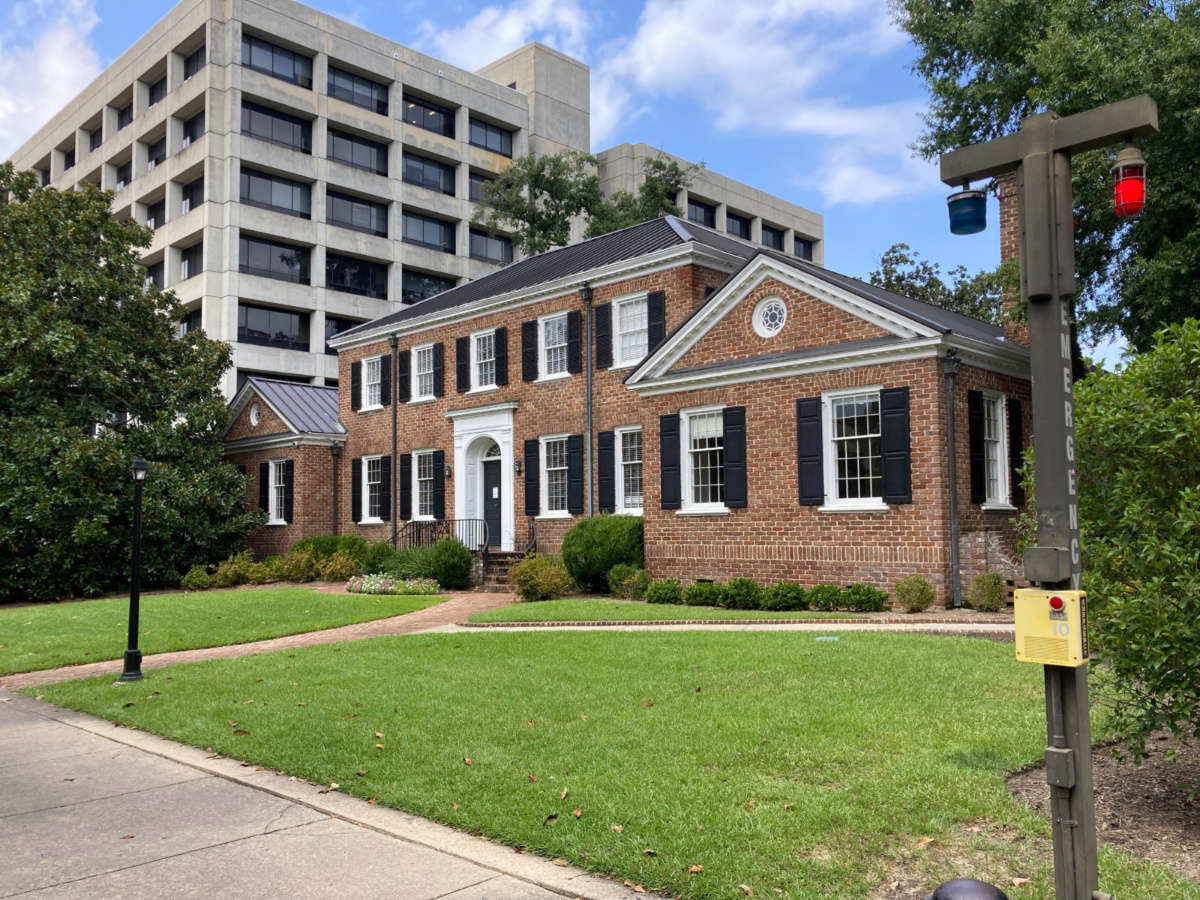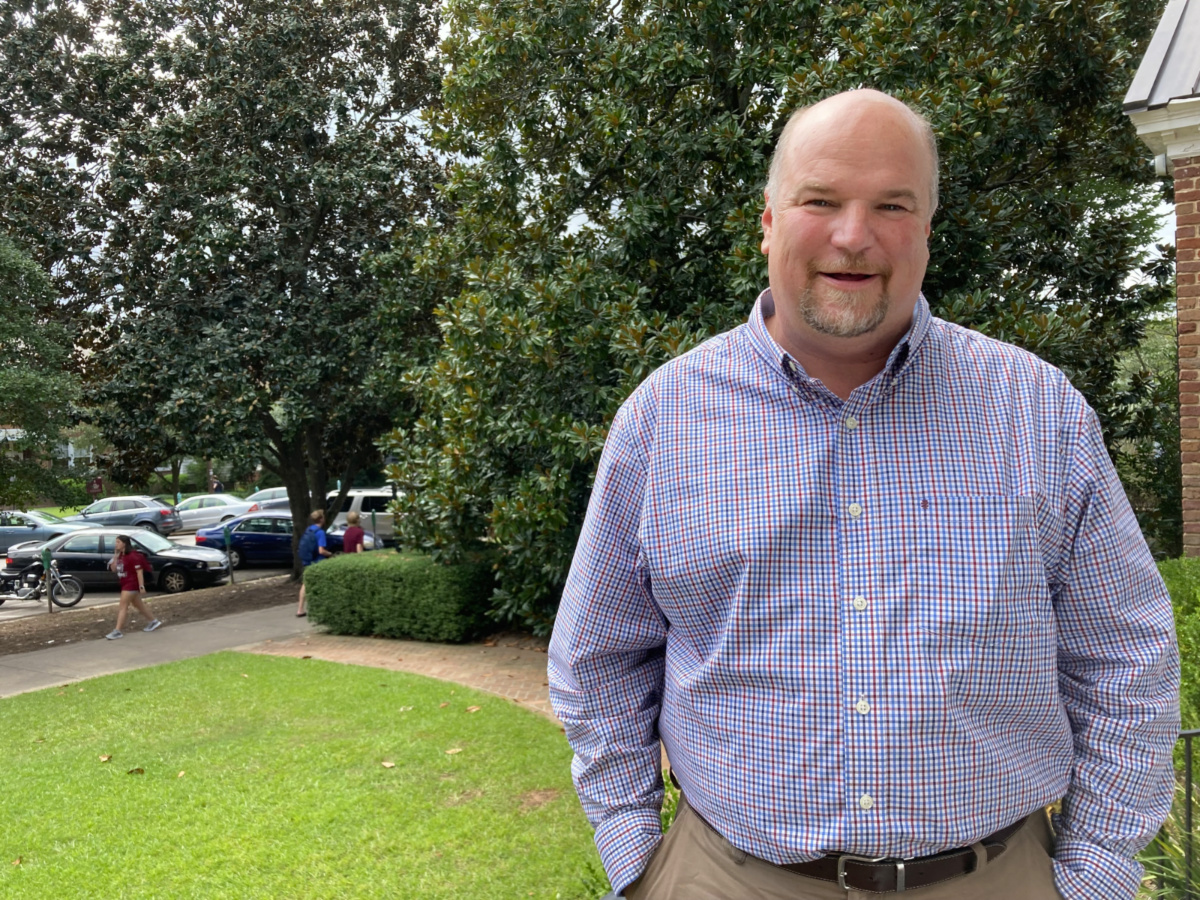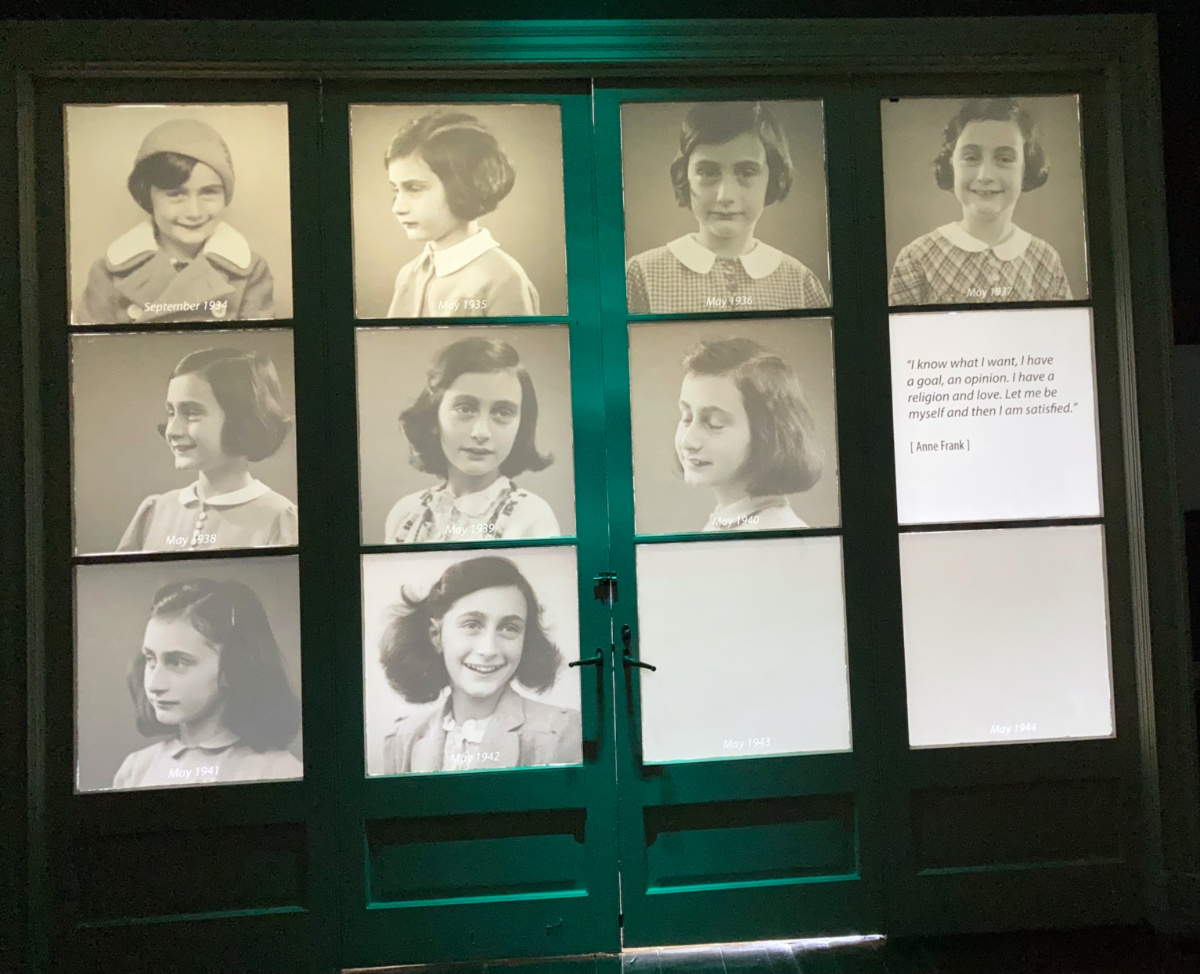
YONAT SHIMRON, of Religion News Service, reports from Columbia in South Carolina on the opening of North America’s first permanent Anne Frank Center…
Columbia, South Carolina, US
RNS
The red-brick Georgian-style home on a tree-lined street at the heart of the University of South Carolina campus has no signs out yet. It is as anonymous, for the moment, as the red-brick Dutch townhouse where Anne Frank hid with her family from German soldiers.
Opened on Wednesday, on the eve of Yom Kippur, the Jewish Day of Atonement, the house is North America’s first permanent Anne Frank Center, dedicated to studying the legacy of the German-Dutch writer whose famous diary chronicled the two years she spent hiding in a secret annex in Nazi-occupied Amsterdam.

The Anne Frank Center at the University of South Carolina in Columbia is located in the Barringer House. PICTURE: RNS/Yonat Shimron
Frank, who died of typhus fever at the Bergen-Belsen concentration camp at the age of 15, is perhaps the Holocaust’s most beloved symbol. Now she is being memorialised in the heart of the US South as part of an educational effort to stem not only hatred of Jews, but bigotry, discrimination and racism more broadly.
Columbia, the capital of South Carolina, is also the birthplace of Dylann Roof, the white supremacist neo-Nazi who in 2015 killed nine members of a historic Black church in Charleston. In 2017 he was sentenced to death.
“Young people all know the power of peer pressure as a negative, but few recognise their own capacity to be a positive influence on one another as peer leaders. I hope we can help students realise their own potential to bring about one another’s better angels and build a community of upstanders.”
– Doyle Stevick, associate professor of educational leadership at the University of South Carolina.
Beginning this semester, some 100 sections of “University 101,” a required class for all incoming students, will tour the centre. Eventually, all first-year students are expected to tour the centre, led by peer guides who have been trained to discuss how society should respond to genocidal ideologies such as the one that killed six million people because they were Jews.
It is this peer-guided learning, developed at the Anne Frank House in Amsterdam, that school officials hope will take Frank’s story far beyond the university campus. They eventually plan to train middle- and high-school teachers to lead guided tours for the general public.
The centre is the brainchild of Doyle Stevick, associate professor of educational leadership at the University of South Carolina, who is an expert on Holocaust education. Stevick believes peer education has the power to stop hatred in its tracks.
“Young people all know the power of peer pressure as a negative, but few recognise their own capacity to be a positive influence on one another as peer leaders,” said Stevick. “I hope we can help students realise their own potential to bring about one another’s better angels and build a community of upstanders.”
Stevick, who is not Jewish, has been associated with Amsterdam’s Anne Frank House since 2013 and has brought six of its travelling exhibits to South Carolina schools. His interest is not limited to anti-Semitism, which has increased dramatically in the past few years, in the US and abroad: He is as concerned with the rise of white nationalism and racism against Blacks and how young people might learn about inclusion, pluralism and democracy.

Doyle Stevick is the executive director of the Anne Frank Center and an associate professor of educational leadership at the University of South Carolina. RNS photo by Yonat Shimron
Stevick was a PhD candidate in classics at Indiana University Bloomington and teaching Latin in 1999 when a photo of a student he had just failed six weeks earlier flashed on CNN.
Benjamin Nathaniel Smith was wanted for a crime spree that started with the shooting and wounding of nine Orthodox Jews in the West Rogers Park neighbourhood of Chicago and ended with the killing of a Black Northwestern University basketball coach and a Korean graduate student at Indiana University.
Smith, who killed himself after a high-speed chase with police, was a member of the neo-Nazi World Church of the Creator, led by Matt Hale.
“That shook up everything I thought I knew,” said Stevick. “I had an image of a racist as a Klan member or a neo-Nazi with a shaved head. I assumed it was people seething hatred that I could spot a mile away. But I had one right under my head and I didn’t realise it.”
He abandoned his research and set about trying to understand how society might help prevent racist extremism through Holocaust education. His dissertation examined Holocaust education in Estonia, a former Soviet republic.
Later, when he co-edited a book on Holocaust education for UNESCO, the United Nations Educational, Scientific and Cultural Organization, he met leaders of the Anne Frank House in Amsterdam and began working with their model for peer education.
The centre’s 1,060 square feet of exhibition space reflects Stevick’s dual agenda. Frank’s story is interspersed with photos, timelines and references to the segregated South, which helped shape Adolf Hitler’s racist agenda.
The exhibit notes that Anne Frank was born in 1929 – the same year as Martin Luther King, Jr, who also lost his life to racist ideology. It features black-and-white photos of Nazi anti-Jewish propaganda alongside a photo of a segregated bus station in Durham, North Carolina, from the same era. The exhibit space closes with artifacts left behind by German prisoners detained in Columbia, South Carolina, during the war.
“The Anne Frank Center lets us focus on issues that are historic and unfortunately very contemporary,” said Rabbi Meir Muller, a professor of early childhood education at the university. “We know that anti-Semitism is on the rise. We want to give it a voice, and we also want to bring up issues of racism, which is very prominent here in the South. The Anne Frank Center allows a certain convergence.”
Columbia, a city of 133,000, is home to about 3,000 Jews. Many have welcomed the centre, which became a reality thanks to the support of former university President Harris Pastides, who agreed to give up part of his office space to make room for the centre.
The city now has the distinction of joining Berlin, London and Buenos Aires as the fourth official partner of Amsterdam-based Anne Frank House.

The Anne Frank Center includes two doors illuminated with photos of Anne as a girl, in Columbia, South Carolina. PICTURE: RNS/Yonat Shimron
Mary McElveen, a second-year student who is the religious events and cultural programming vice president at Hillel, the Jewish campus organisation, and one of about 500 Jews on a campus of 34,000, said she feels comfortable as a Jewish student but is also cautious about sharing her Jewish faith.
“I have met so many people who have lacked in Holocaust education and don’t know who Anne Frank was,” said McElveen.
At a time when American Jews are again on the defensive, the centre is a welcome addition, said Rabbi Sruly Epstein, a Chabad rabbi at the university.
“Jewish students don’t need to be satisfied with not being bothered or not experiencing antisemitism,” Epstein said. “They can be public about their Jewish pride, their history and heritage.”
With the opening of the centre, funded by the Anne Frank House in Amsterdam, the university and private donations, Stevick hopes it cements the university’s commitment to inclusion and civil society.
“If we can build a community of upstanders and we expect one another to stand up together,” he said, “then we’re responding the way we need to be. That’s something we can help people wrap their minds around.”





